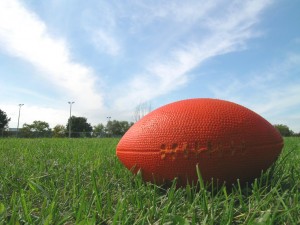
Several prominent figures for this year’s World Cup event have been lost to injuries. The list includes:
- Franck Ribery – France
- Radamel Falcao – Columbia
- Marco Reus – Germany
- Kevin Strootman – Netherlands
- Luis Montes – Mexico
- Riccardo Montolivo – Italy
- Christian Benteke – Belgium
- Theo Walcot – England
- Roman Shirikov – Russia
Leg fractures to rolled ankles have plagued this year’s field of players throughout the world. It’s not unusual for injuries to strike before the World Cup, due in part to the increasing demand on players during the club season and the brief turnaround before reporting to national team duty ahead of the sport’s premier competition.
Sepp Blatter, president of FIFA, which puts on the World Cup, blamed “too long a [club] season and always the same players [from the elite clubs] are always in the same competitions. Now they are tired.”
Fatigue is not responsible for all injuries. Muscular ailments occur at all stages of the season, while missteps and reckless tackles are also to blame. Falcao suffered a knee injury in January.
According to U.S. midfielder, Michael Bradley, “There [are] certain things as players you do to try to prevent injuries, to try to stay fit, but at the end of the day, you step on the field, you play, you leave everything out on the field and unfortunately things happen at times.” He goes on to say, “No player ever wants to see anybody else get hurt and have to miss a big game, a big tournament.”
Common soccer injuries include:
- Lower extremities – Sprains and strains are the most common lower extremity injuries. The severity of these injuries varies. Cartilage tears and anterior cruciate ligament (ACL) sprains in the knee are some of the more common injuries that may require surgery. Other injuries include fractures and contusions from direct blows to the body.
- Overuse of lower extremities – Shin splints (soreness in the calf), patellar tendonitis (pain in the knee), and Achilles tendonitis (pain in the back of the ankle) are some of the more common soccer overuse conditions. Soccer players are also prone to groin pulls and thigh and calf muscle strains.
- Upper extremities – Injuries to the upper extremities usually occur from falling on an outstretched arm or from player-to-player contact. These conditions include wrist sprains, wrist fractures, and shoulder dislocations.
- Head, neck and face injuries – Injuries to the head, neck, and face include cuts and bruises, fractures, neck sprains, and concussions. A concussion is any alteration in an athlete’s mental state due to head trauma and should always be evaluated by a physician. Not all those who experience a concussion lose consciousness.
Treatment options to soccer injuries include:
- Stop participation immediately until any injury is evaluated and treated properly.
- Most injuries are minor and can be treated by a short period of rest, ice, and elevation. Contact the physicians at Orthopedic Specialists of Seattle (OSS) to evaluate an injury.
- Overuse injuries can be treated with a short period of rest, which means that the athlete can continue to perform or practice some activities with modifications.
- In many cases, pushing through pain can be harmful, especially for stress fractures, knee ligament injuries, and any injury to the head or neck. Contact the physicians at Orthopedic Specialists of Seattle for proper diagnosis and treatment of any injury that does not improve after a few days of rest.
- Return to play only when clearance is granted by a physician.
Orthopedic Specialists would like to offer the following tips for preventing soccer injuries:
- Have a pre-season physical examination and follow your doctor’s recommendations
- Use well-fitting cleats and shin guards — there is some evidence that molded and multi-studded cleats are safer than screw-in cleats
- Be aware of poor field conditions that can increase injury rates
- Use properly sized synthetic balls — leather balls that can become waterlogged and heavy are more dangerous, especially when heading
- Watch out for mobile goals that can fall on players and request fixed goals whenever possible
- Maintain proper fitness — injury rates are higher in athletes who have not adequately prepared physically.
- After a period of inactivity, progress gradually back to full-contact soccer through activities such as aerobic conditioning, strength training, and agility training.
- Avoid overuse injuries — more is not always better! Sports medicine specialists at Orthopedic Specialists of Seattle believe that it is beneficial to take at least one season off each year. Try to avoid the pressure that is now exerted on many young athletes to over-train. Listen to your body and decrease training time and intensity if pain or discomfort develops. This will reduce the risk of injury and help avoid “burn-out”
- Speak with a sports medicine physician at Orthopedic Specialists of Seattle if you have any concerns about injuries or soccer injury prevention strategies
According to Dr. Peterson, “Two of the challenges the US team will have to face in addition to the “Group of Death” pairings are travel and heat. They will travel over 6000 miles during the preliminaries, and will be playing at least on of their games deep in the Amazon rain forest in the middle of summer! In these situations, it’s very important to work on hydration, proper diet, and sleep. Proper hydration is occurring when one’s urine is fairly clear to clear. Proper diet varies, but usually should include a balance of protein, carbohydrates, and fats. Eat plenty of fruits and vegetables and minimal fried foods and alcohol. Sleep can be tough with airplane travel.
Try to have a standard time to go to bed, and getting at least 8 hours per night is important. If it is hard to fall asleep, natural sleep aids like melatonin can help. Good luck, USA and Sounders players!”
If you believe you are suffering from a soccer-related injury and need specialized orthopedic care, Orthopedic Specialists of Seattle provide excellent treatment options available for you. Please feel free to contact OSS at (206) 633-8100 to schedule an appointment.





